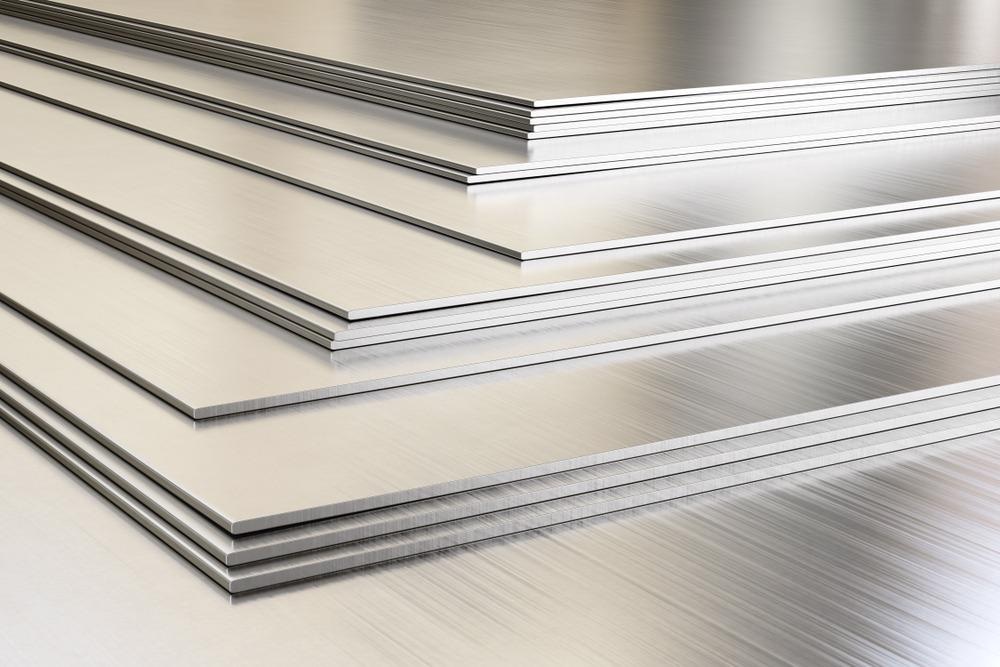The Polish designer and architect Oskar Zieta, together with Philipp Dohmen, an architect at the Swiss Federal Institute of Technology in Zurich, created an engineering technique enabling the fabrication of lighter and less expensive steel products without compromising structural strength. The inflated steel structures could potentially revolutionize the design and construction sectors by creating innovative, customizable, and fully recyclable objects.

Image Credit: SimoneN/Shutterstock.com
Without a doubt, steel is the most important engineering and construction material that underpins almost every aspect of human life.
Today, steel is used in buildings construction, transportation, infrastructure development, and consumer goods manufacturing.
Steel is a versatile material that can be manufactured to fit a wide range of requirements, permitting the creation of structural elements with diverse shapes and properties.
The material also has decorative use in facades, interiors, and street furniture. Steel combines strength and flexibility that gives architects the freedom to create their most ambitious designs.
Revolutionizing Steel Construction Technology
Engineers and designers are constantly seeking ways for the cost- and energy-efficient production of bespoke-shaped steel structural components. Oskar Zieta, a Polish designer and architect, and founder of Zieta Prozessdesign Studio, embarked on such a quest more than 15 years ago together with Philipp Dohmen, Zieta's colleague at the time at the Swiss Federal Institute of Technology (ETH) in Zurich.
During his Ph.D. studies at the Computer Aided Architectural Design department (which is part of ETH’s Department of Architecture), Zieta developed the concept behind an innovative steel forming process called FiDU (from German Freie Innendruck Umformung, or Free Inner Pressure Deformation in English).
The method enables the creation of three-dimensional objects of various sizes out of two-dimensional metal sheets welded together by using internal air pressure.
Inflated Steel Opens Up Unexplored Design Opportunities
The method is relatively simple yet very efficient, and has the potential to revolutionize modern-day construction techniques.
In the process, laser-cut sheets of one millimeter-thick high-strength steel are robot-welded together to ensure a perfect fit and accurate shape of the final product.
The welded sheets are then deformed by applying air pressure between the sheets. Depending on the material thickness and properties, the air pressure can be in the range of 0.1-50 bar.
The result is a solid but lightweight three-dimensional steel structure obtained through a minimum number of production steps and without expensive tools or molds.
The metal deforms as it inflates according to its natural characteristics, resulting in small variations and making each component unique, despite the identical initial design. Importantly, as Zieta explains, the welded steel templates can then be inflated anywhere, which makes this technology very flexible.
Inflated Steel Furniture Paves the Way for Lightweight Construction
The inflated steel concept was first tested with the manufacture of a three-legged stool called Plopp, which Zieta designed and produced in 2008.
By perfecting the technology, the designer learned how to make complex and lightweight steel structures that can spontaneously deform (when inflated) into the desired final shape.
"INFLATALES. Oskar Zieta Steel Stories" at GAGA MOS Architecture Gallery
Image Credit: Zeita Studio/Youtube.com
Due to steel’s inherent strength and the innovative FiDU technology, the award-winning stool design (that weighs around three kilograms) can withstand a load of over two tons.
Pavilion Made from Inflated Steel Arches
The design team sees opportunities that stretch far beyond furniture. With a background in architecture, Zieta focused his research on construction and architectural applications of inflated steel technology. The inflated steel pavilion built by Zieta in 2017, called NAWA, is a combination of art, architecture, and industrial research.
The project can be regarded as a 'manifesto' of FiDU technology. The shiny steel structure, built as part of Wroclaw's European Capital of Culture celebrations, has become a landmark on Daliowa island, one of the many islands in the Odra river that runs through the Polish city.
NAWA is an ultra-light and robust installation of 35 steel arches that form a gate-like bionic form that resembles a naturally growing sculpture.
The pavilion's dimensions are 7.5m x 10m x 11m with a total weight of only 11 tons. It was the first building-size construction that employed FiDU technology. The organic shapes of the arches are a result of a computer-aided design process and become apparent owing to the FiDU inflation process.
Realizing the Potential of Steel Architecture
Such structures can be used as load-bearing elements and construction components, merging beauty and functionality. In addition, the computer-aided manufacturing process permits new ideas and designs to be implemented faster and at a reduced cost.
Besides the range of designer furniture, such as inflated steel tables, chairs, and stools, Zieta has also developed proof-of-concept designs of an ultra-lightweight steel footbridge and a low-cost wind turbine prototype.
Currently, Zieta's team is working on implementing FiDU in large-scale projects where steel architecture can be utilized in novel facade elements and ultralight constructions for industrial applications.
The FiDU technology has the potential to offer massive savings in terms of materials and production costs, as well as greater sustainability of the industrial and architectural designs.
References and Further Reading
M. Johanson (2021) Inflatable steel furniture paves way for even lighter infrastructure [Online] https://worldsteel.org/. Available at: https://stories.worldsteel.org/innovation/inflatable-steel-furniture-lighter-infrastructure-wind-energy-space-construction (Accessed on 15 October 2021).
Metalurgprom (2021) European designers have learned to inflate steel structures that could be a breakthrough in technology [Online] www.metallurgprom.org Available at: https://metallurgprom.org/en/news/ukraine/8751-evropejskie-dizajnery-nauchilis-naduvat-stalnye-konstrukcii-chto-mozhet-stat-proryvom-v-tehnologijah.html (Accessed on 15 October 2021).
R. S. Aouf (2018) Oskar Zieta inflates steel to create Daliowa island pavilion in Poland [Online] www.dezeen.com Available at: https://www.dezeen.com/2018/07/23/oskar-zieta-inflates-steel-daliowa-pavilion-wroclaw-poland-technology (Accessed on 15 October 2021).
C. L. Damewood, (2021). Oskar Zieta’s Inflated Steel Sculpture Could Revolutionize Construction Technology [Online] www.dornob.com Available at: https://dornob.com/oskar-zietas-inflated-steel-sculpture-could-revolutionize-construction-technology (Accessed on 15 October 2021).
Disclaimer: The views expressed here are those of the author expressed in their private capacity and do not necessarily represent the views of AZoM.com Limited T/A AZoNetwork the owner and operator of this website. This disclaimer forms part of the Terms and conditions of use of this website.